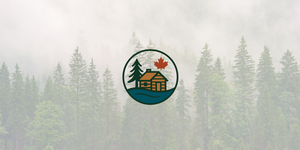You've got the boat gassed up, cooler packed, and that ancient bottle of SPF 50 you found at the back of the closet. You're protected, right?
Here's what that faded sunscreen bottle won't tell you: most of what we learned about sun protection at the family cabin is outdated, wrong, or straight-up harmful to the lake we love.
Let's separate the dock wisdom from the actual science.

What SPF Actually Means
SPF (Sun Protection Factor) measures how long you can stay in the sun before burning compared to unprotected skin. If you normally burn in 10 minutes, SPF 30 theoretically gives you 300 minutes of protection. However, this assumes perfect laboratory conditions and application.
In reality, SPF 30 blocks 97% of UVB rays, SPF 50 blocks 98%, and SPF 100 blocks 99%. The difference becomes marginal at higher numbers. More important than extreme SPF values is proper application; studies have shown that most people apply only 25-50% of the amount they should.
A shot glass worth of SPF 30 applied properly outperforms a thin layer of SPF 100.
Base Tans as Protection
A tan provides approximately SPF 3-4 protection. Research shows that any tan results in skin damage at the cellular level, with melanin production occurring only after UV exposure impacts your DNA. Studies link intentional tanning with a 20% increase in risk for the most dangerous form of skin cancer, melanoma.
Gradual sun exposure with protection is safer than attempting to build a "protective" tan.

Water-Resistant vs. Waterproof
No sunscreen is waterproof. "Water-resistant" indicates the product maintains its stated SPF for either 40 or 80 minutes while swimming or sweating. This testing assumes proper initial application and doesn't account for towel-drying, which removes most sunscreen.
Reapply after swimming, sweating heavily, or towel-drying.
Chemical vs. Mineral
Both chemical (avobenzone, octinoxate) and mineral (zinc oxide, titanium dioxide) sunscreens are considered safe by Health Canada.
Chemical sunscreens absorb UV and convert it to heat; mineral filters reflect and scatter UV rays.
Environmental impact
Chemical sunscreens, particularly oxybenzone and octinoxate, have been shown to accumulate in aquatic ecosystems and cause damage to coral (though this isn't a specific concern in our freshwater lakes). Hawaii and several other jurisdictions have banned these ingredients. Mineral sunscreens are generally considered reef-safe, though nano-sized particles remain under study.
For lake environments, both types can affect water quality, but chemical filters tend to bioaccumulate more readily in freshwater fish and plants.
For water activities, mineral sunscreens offer similar protection with less environmental impact.
Expiration and Storage
Sunscreen typically remains effective for three years from manufacture when stored properly. Heat and sun exposure accelerate breakdown of active ingredients. A change in consistency, smell, or color indicates replacement is needed.
Date bottles when purchased and store in cool, dry conditions.

Next time you're loading up for a weekend at the lake, you can skip the SPF 100 and the pre-tanning session. Instead, grab a fresh bottle of SPF 30-50 (mineral if you're swimming), set a reapplication timer on your phone, and actually use enough of the stuff.
Cabin memories shouldn't include a lobster-red sunburn that keeps you up all night - not to mention skin cancer down the road.
They should be about everything else that happens when life slows down at the water's edge.






Join the Conversation